Nothing steals the spotlight on a cool evening quite like the warm glow of a thoughtfully designed fireplace. Today’s hearths are no longer limited to brick boxes; they double as sculptural dividers, eco-conscious heaters, and high-tech light shows. Designers are experimenting with stone that climbs to the ceiling, floating benches that seem to defy gravity, and flames that dance behind glass on both sides of a wall. Whether you crave the crackle of real logs or the convenience of an app-controlled electric unit, the following twenty fireplace ideas will help you reimagine the heart of your home and turn every gathering into an invitation to linger.
1. Linear Gas Fireplace
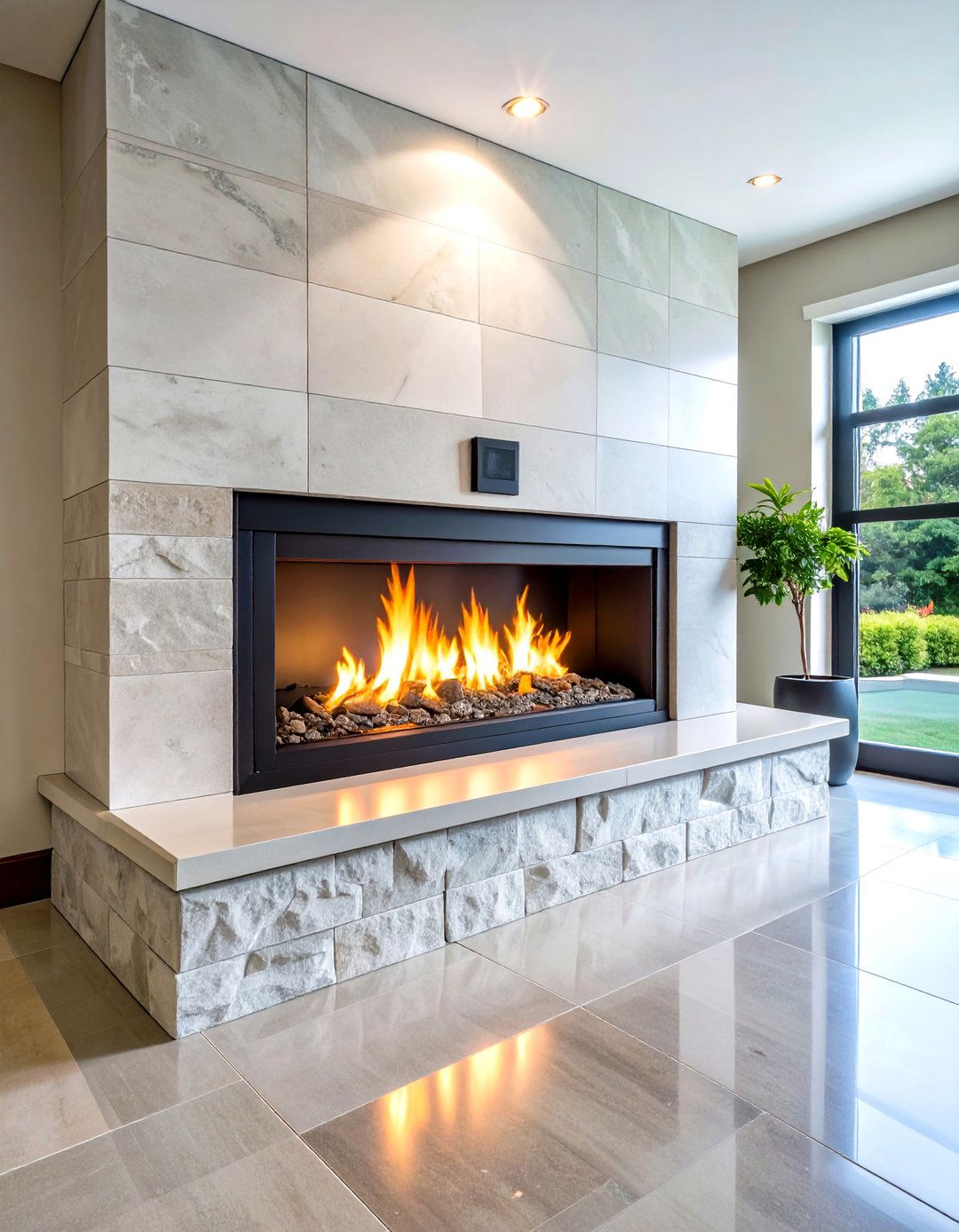
Unlike traditional boxy hearths, a linear gas fireplace stretches a ribbon of flame across a sleek horizontal opening, instantly modernising any living room. Slim fireboxes recess into 2×6 walls, freeing precious floor area and letting sectionals slide closer for conversation. Integrated blowers push heat into the room quietly, while low-reflectivity glass keeps the view razor sharp. New 2025 models pair variable gas valves with mobile-app thermostats so you can set a steady 22 °C from the sofa, and many feature optional heat-dump kits that protect art hung above. Finish the surround in plaster, stone, or tile and the fireplace becomes living artwork that never feels bulky.
2. Vent-Free Bioethanol Fireplace
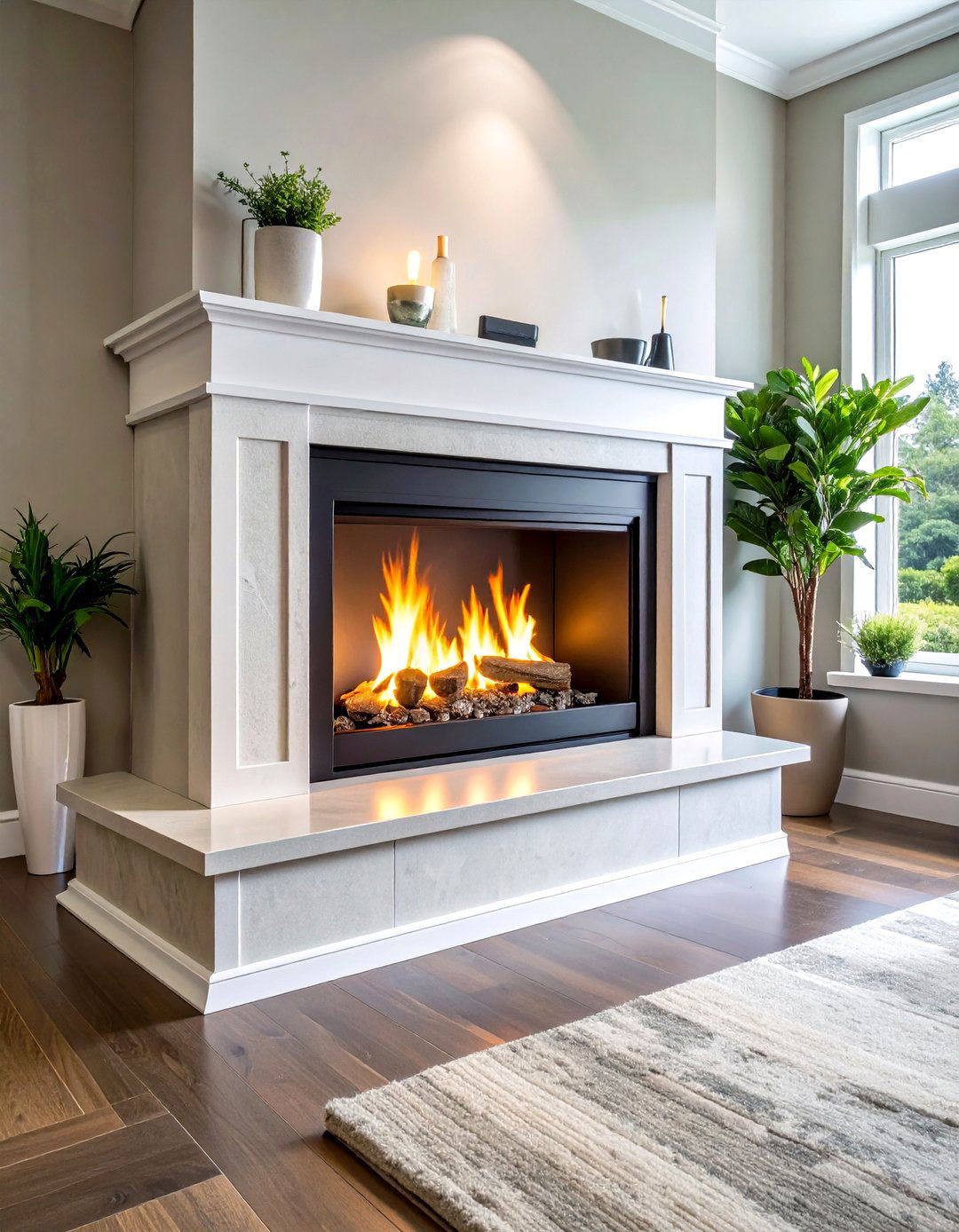
A vent-free bioethanol fireplace delivers real flame without a chimney, vent, or gas line, making it the go-to upgrade for apartments and remodels where cutting brick isn’t an option. Automatic burners sense oxygen levels and shut off if CO₂ rises, while spill-proof cartridges simplify refuelling. Because the fuel burns clean, you can float the unit in a bookcase or build it into drywall with nothing more than heat-rated insulation. Contemporary styles run as slim as 150 mm deep, yet still produce a captivating golden curve of fire for up to eight hours per fill. The result is genuine warmth, lightly scented steam, and zero smoky residue on fabrics.
3. Double-Sided Fireplace for Shared Spaces
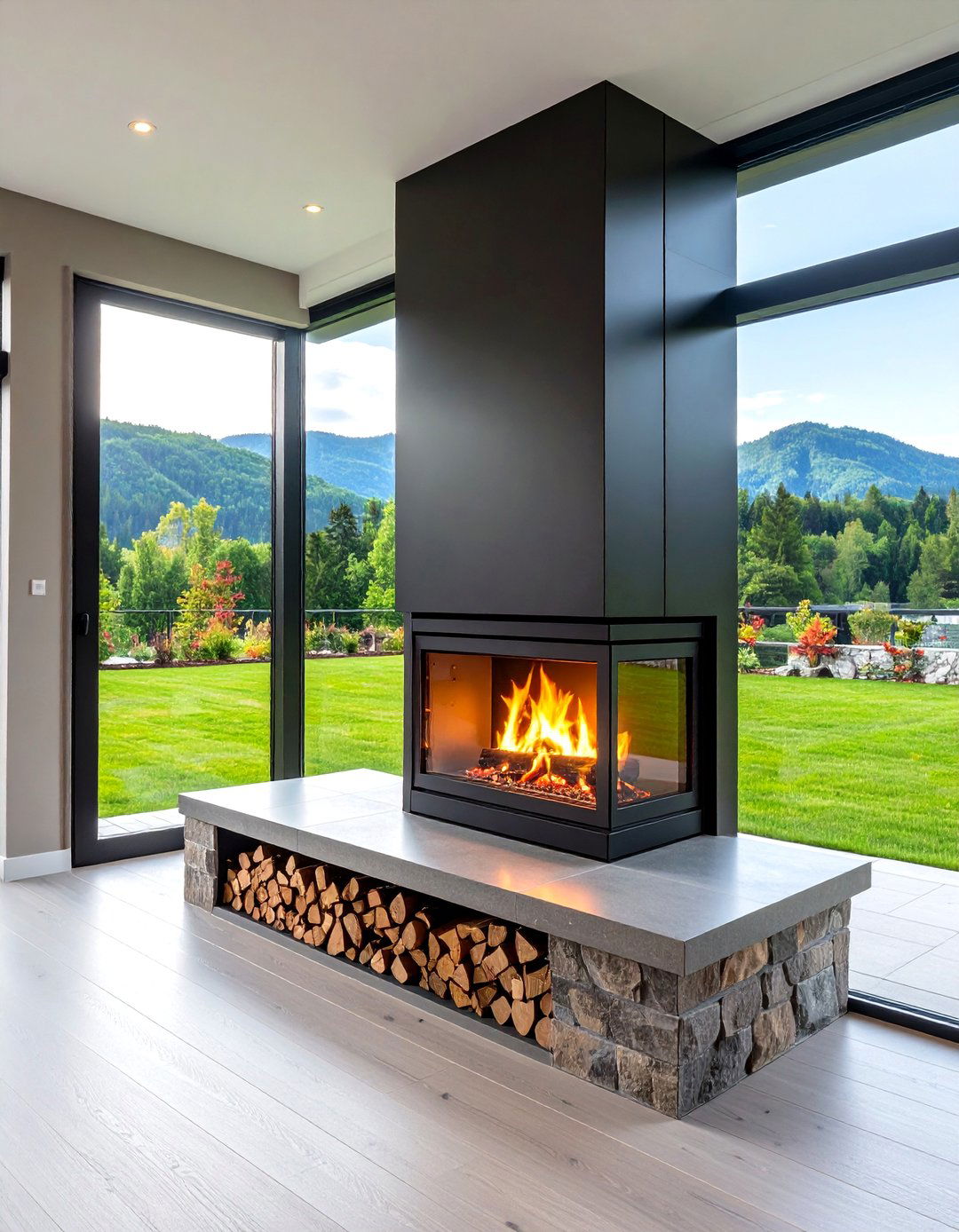
To merge two gathering zones while preserving an open flow, a double-sided fireplace allows you to view and feel the flames from both rooms at once. Thick ceramic glass and insulated steel keep heat balanced on each side, so the family room stays cozy without overheating the adjoining dining area. Current builds come in wood, gas, and even biofuel versions, and some models span nearly two metres, effectively replacing a full wall. You can tuck firewood storage beneath the firebox or frame the unit in stone columns that echo architectural beams. The shared hearth pulls sightlines through the house and encourages conversation to travel with the fire.
4. Outdoor Patio Fireplace
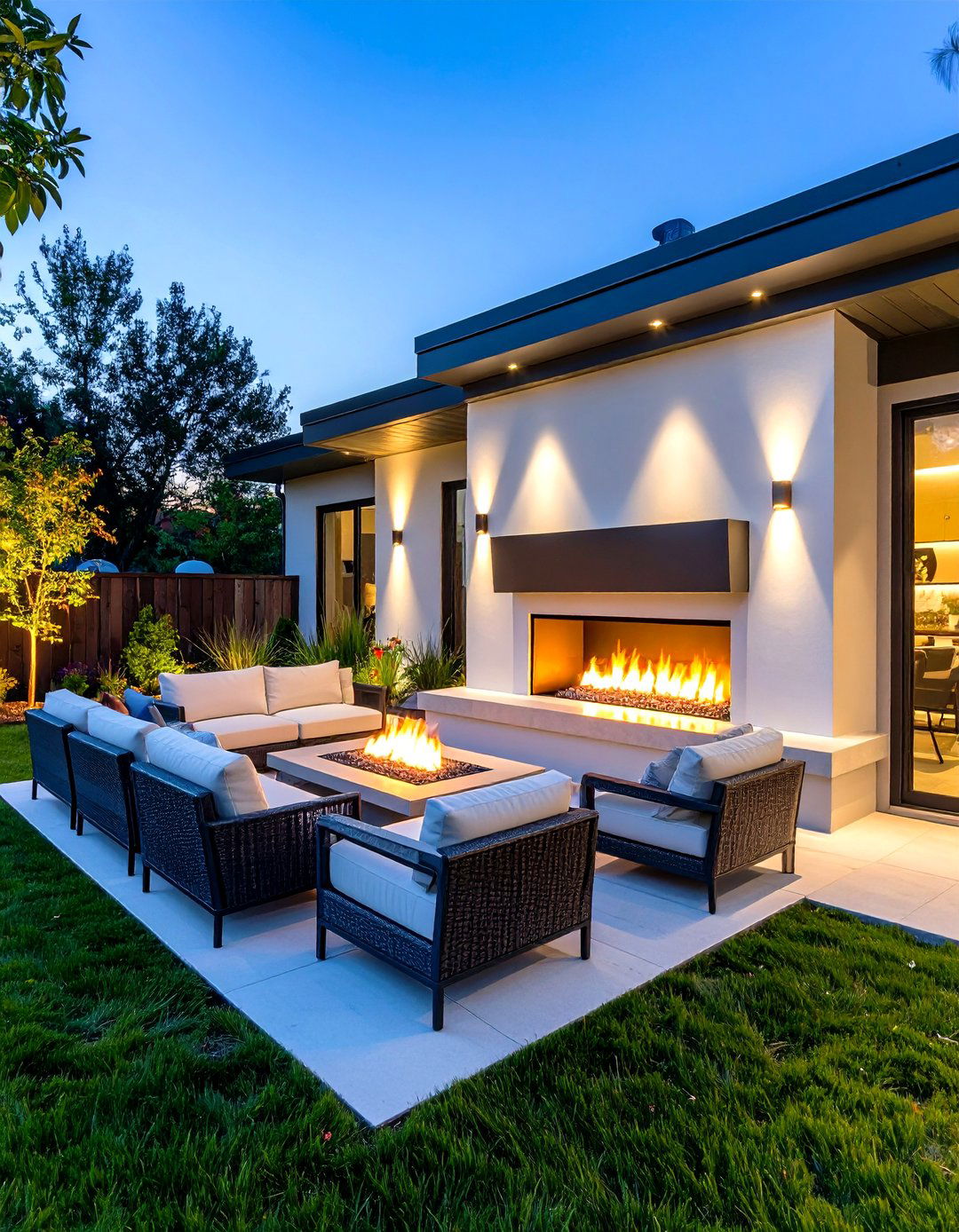
Consider adding an outdoor fireplace to extend patio season by several months and create a destination that rivals any indoor lounge. Weather-sealed gas burners now offer electronic ignition rated to start even at 0 °C, and stainless-steel fireboxes resist rust from coastal humidity. Designers often flank the chimney with built-in seating so guests can watch embers under the stars without dragging chairs across pavers. Integrate low-voltage LED uplights into the mantel to accent the stone texture after dark, and wire a smart switch so the flames become part of your landscape-lighting scene. The gentle roar masks street noise, while radiant heat takes the chill off spring evenings.
5. Floating-Hearth Fireplace
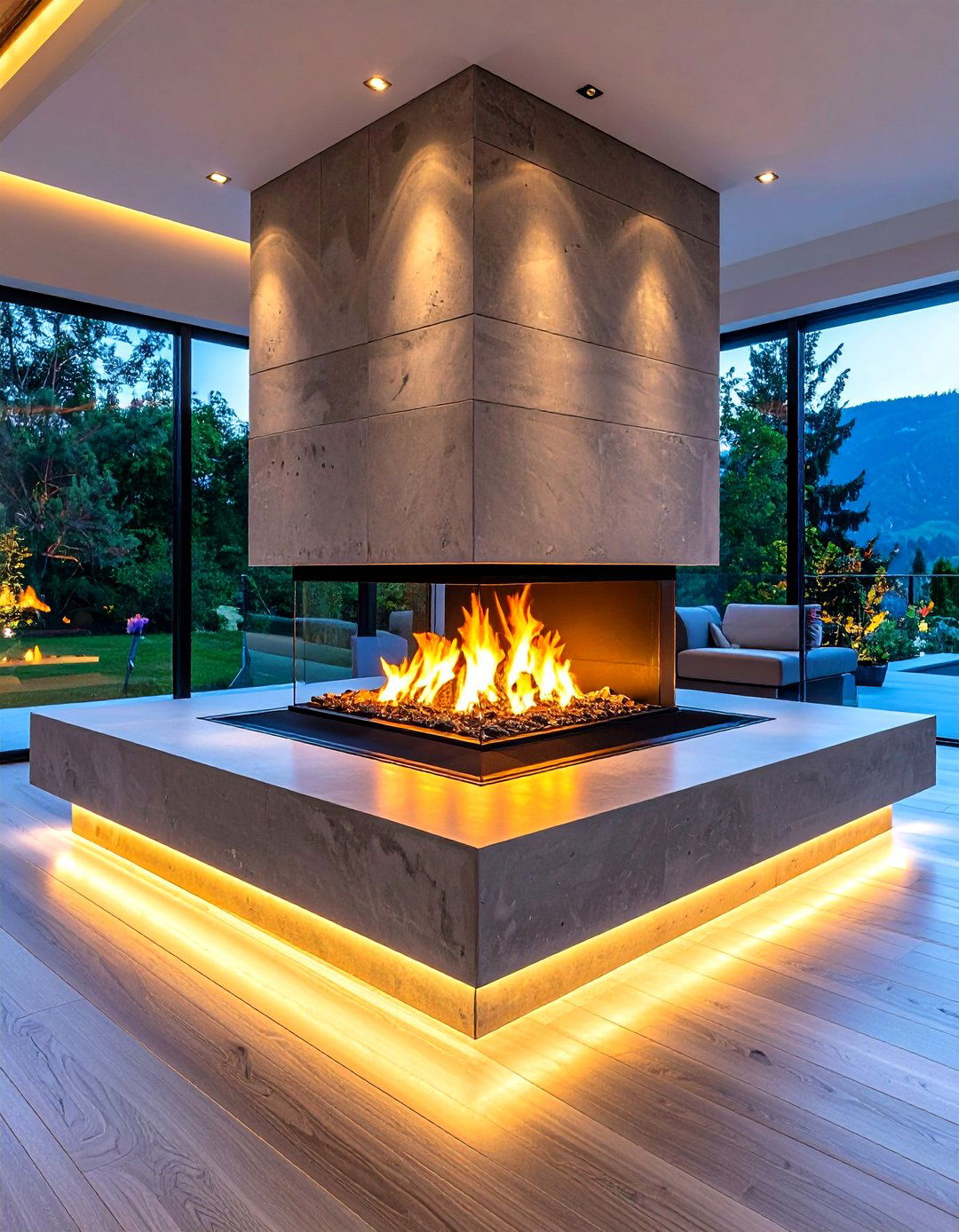
A floating-hearth fireplace appears to hover above the floor, bringing a touch of gallery drama without blocking sightlines. Fabricators weld a steel pan below the firebox and anchor it inside the stud wall, then finish the underside in stone, concrete, or wood veneer so the hearth seems to levitate. The open space underneath becomes handy log storage or a subtle niche for LED strip lights that cast a warm under-glow at night. Because the raised platform keeps embers farther from kids and pets, many families find it safer than a traditional flush hearth while still meeting building codes. The illusion of weightlessness instantly refreshes dated rooms.
6. Floor-to-Ceiling Stone Fireplace
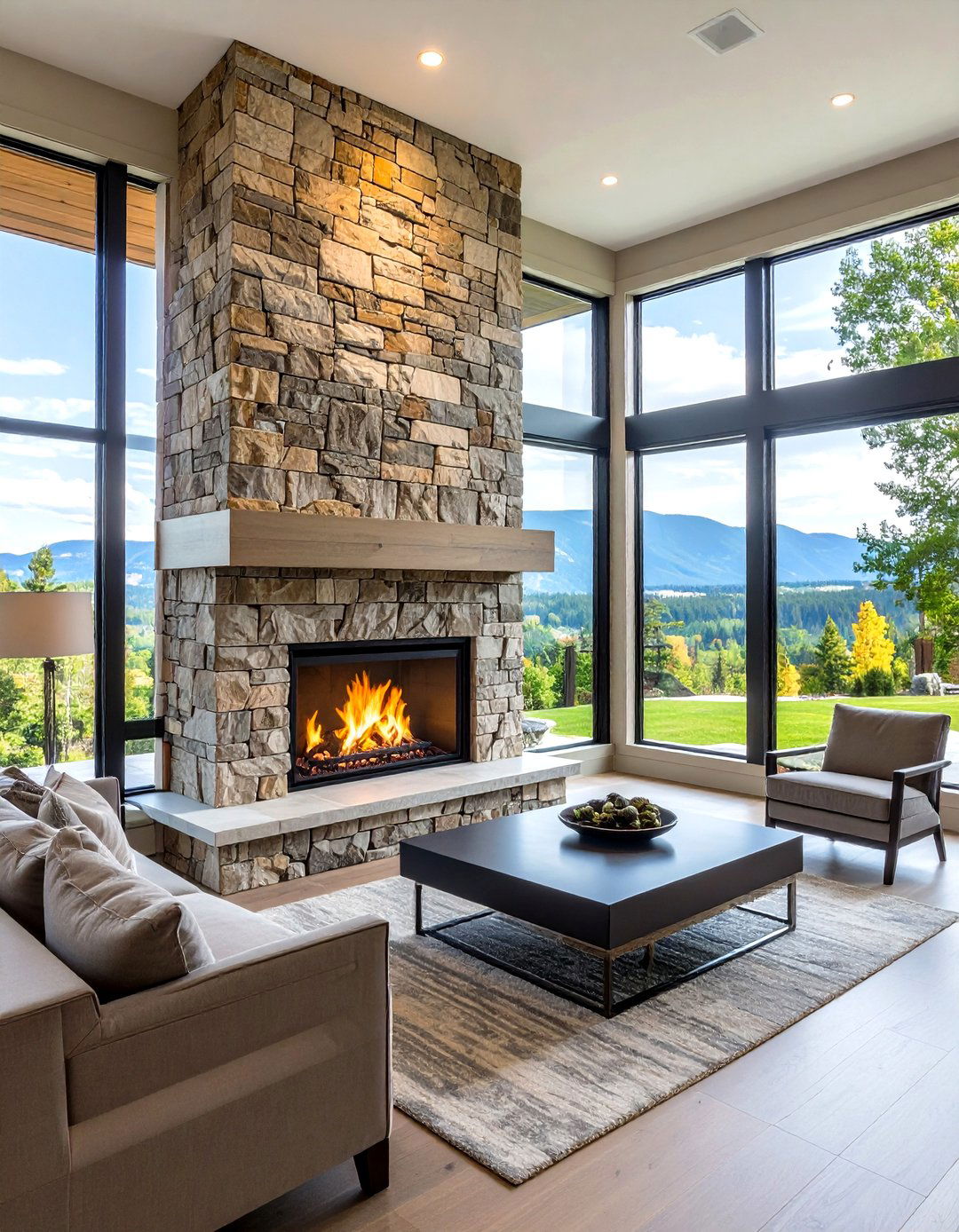
A floor-to-ceiling stone fireplace delivers the kind of vertical drama that makes ceilings feel higher and rooms feel anchored. Builders are using stacked quartzite, limestone, or even thin-cut slate panels that install like tile but read as a monolithic wall. Extended fireboxes can be centered or offset to create asymmetry, and linear gas inserts hide within for a crisp minimalist opening. The mass of masonry soaks up heat and then radiates it back slowly, stabilising temperature long after the flames die. Stone’s natural texture pairs especially well with exposed beams and oversized picture windows, giving rustic cabins and modern lofts alike a timeless focal point.
7. Freestanding Electric Fireplace
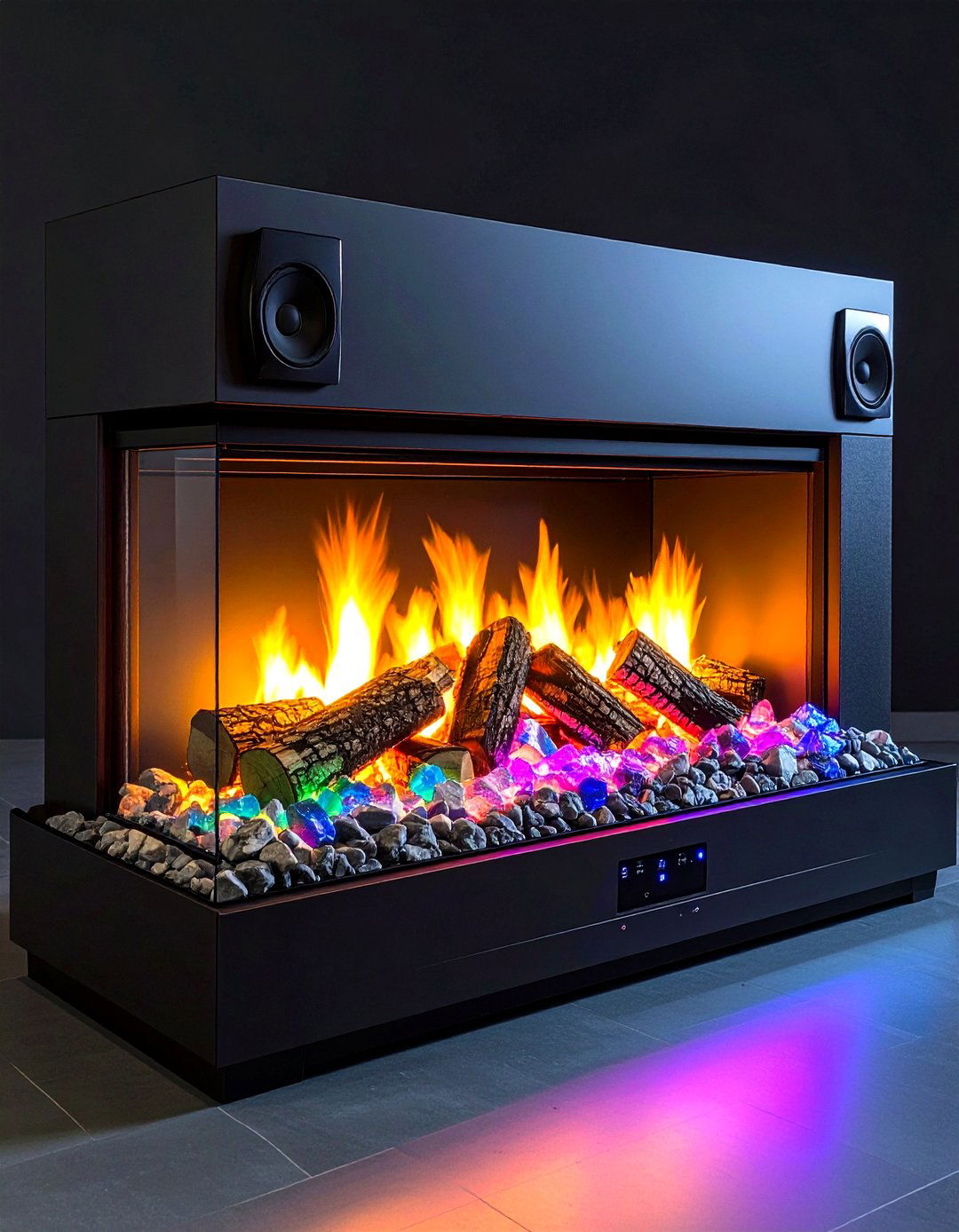
Freestanding electric fireplaces have evolved from clunky boxes into sculptural heaters with 3-D resin logs and colour-shifting ember beds that look surprisingly authentic. Because they plug into a standard outlet, installation takes minutes, yet thermostatic fans can still warm rooms up to 40 m². Most 2025 units include overheat shut-off, cool-touch glass, and a remote that cycles flame brightness independent of heat, so you can enjoy ambiance even in July. Many also feature integrated Bluetooth speakers that layer crackling sounds over playlists for an immersive experience. Slide one into a reading nook, tiny apartment, or rental where permanent alterations are off-limits, and reclaim a cozy fireside ritual.
8. High-Efficiency Fireplace Insert
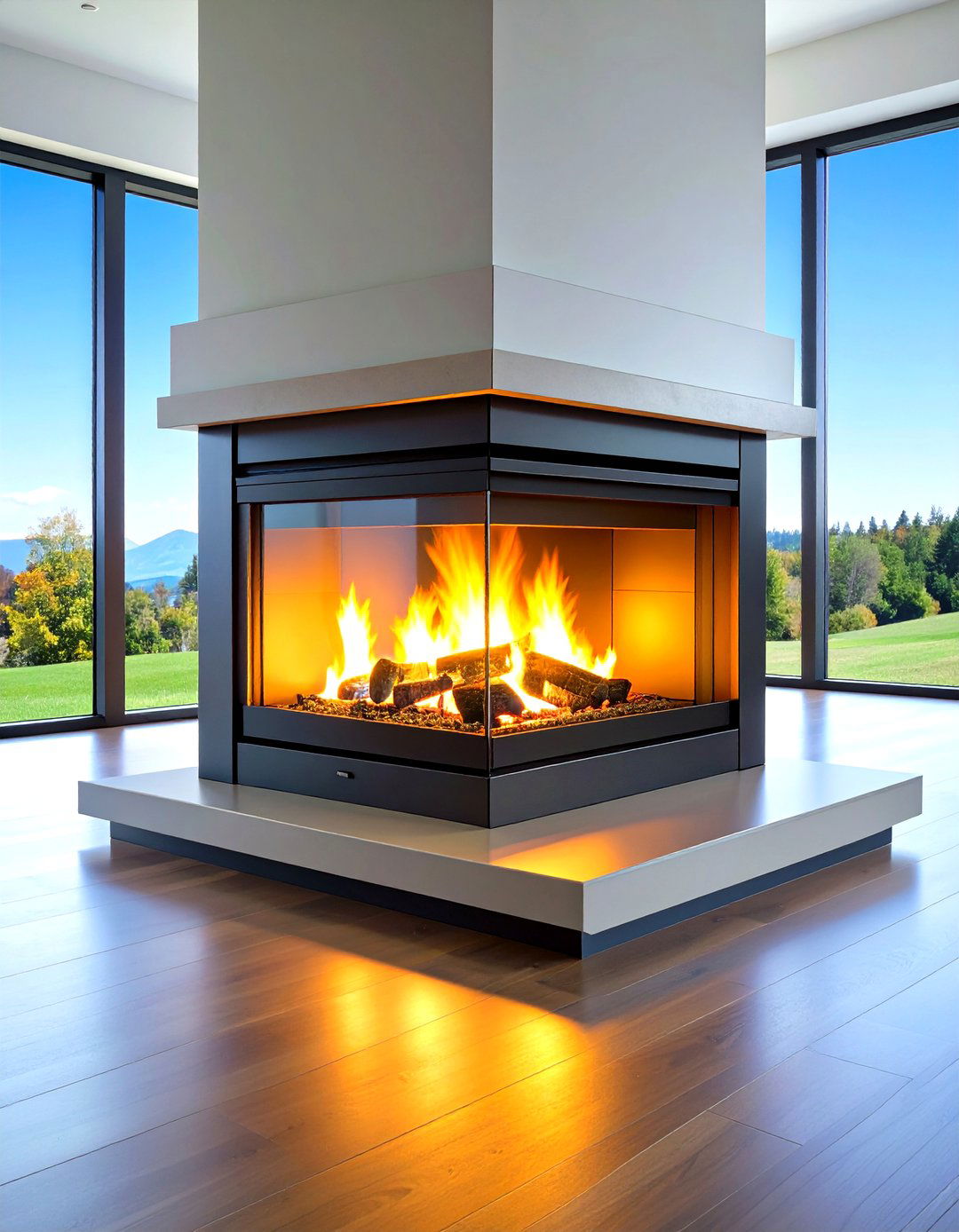
A fireplace insert slides into an existing masonry opening and seals it with insulated glass, transforming a drafty relic into a high-efficiency heat source. Modern wood-burning inserts reach up to 80 percent thermal efficiency thanks to secondary combustion chambers that burn smoke before it exits. Some models include variable-speed blowers and thermostatic controls, turning the old hearth into a controllable space heater that saves energy compared with central furnaces. Gas and pellet versions offer even cleaner operation and can often be retrofitted in a single day. If your living room still whistles on windy nights, an insert provides instant comfort without sacrificing the character of brickwork.
9. Corner Fireplace for Compact Rooms
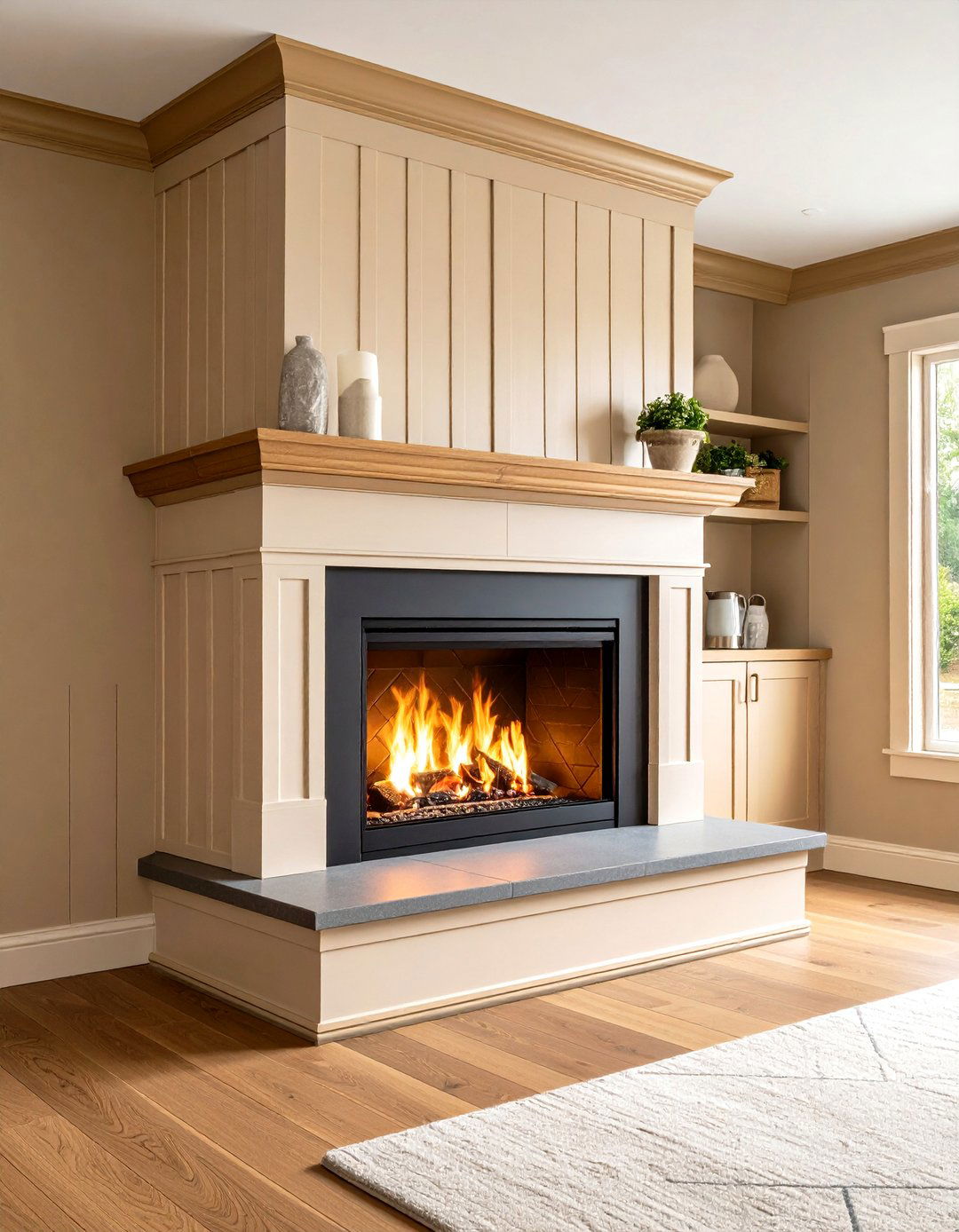
Placing a corner fireplace diagonally across two walls frees up an entire section of floor plan that would otherwise host a bulky chimney breast. Shallow electric fireboxes as narrow as 280 mm make the installation possible even in studio flats, while mantels with built-in media shelves keep televisions at ergonomic height. Convertible surrounds let you switch from a corner to flat-wall placement if the room layout changes. For visual balance, designers often run tongue-and-groove panelling above the unit to draw the eye upward. The angled firebox radiates heat into adjacent walkways, ensuring no one feels left out during family game night.
10. Fireplace Accent Wall
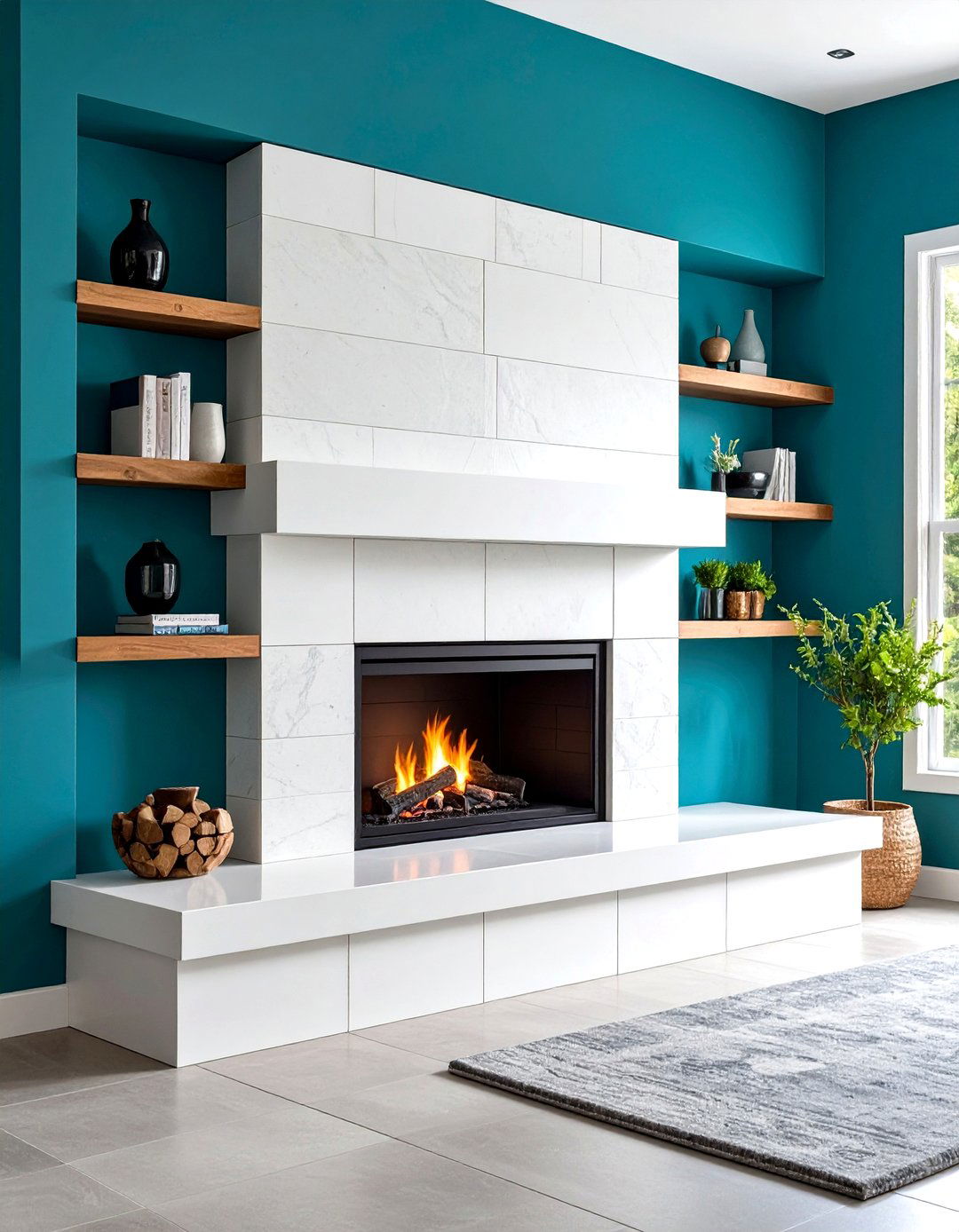
A fireplace accent wall turns the entire elevation into a decorative statement, blurring the line between architectural element and oversized art piece. Peel-and-stick porcelain slabs or lightweight cement panels can cover old brick in a weekend, while flush electrical conduits keep sconces and artwork cords hidden. Many homeowners paint adjacent walls a neutral white so the fireplace’s new texture—be it weathered wood, terrazzo, or patterned tile—commands attention. By installing floating shelves on either side, you also gain stylish storage for books and greenery that soften the hard surface. The key is choosing materials that echo colours found elsewhere in the room, creating cohesion rather than competition.
11. Dramatic Black Marble Fireplace

Black marble fireplaces are surging in popularity for their ability to add instant drama and contrast without busy ornamentation. Polished slabs frame the fire like a glossy picture window, and subtle white veining mirrors the flicker of flames. Because the dark surface absorbs light, even a modest gas insert feels more vibrant against the inky backdrop. Designers pair the look with minimalist brass sconces or matte-black ceiling beams to reinforce the monochrome palette. A colour-matched hearth keeps the composition seamless, allowing rugs and upholstery to pop. The result is a sophisticated centerpiece equally suited to urban lofts and lakeside cabins seeking a modern edge.
12. Fireplace as Room Divider

Using a fireplace as a room divider solves two challenges at once—zoning an open floor plan and delivering warmth to both zones. Three-sided peninsular designs feature glass on the long and both short faces, creating an almost panoramic view of the flames. Because they vent vertically through a discreet chase, you can position them mid-room without stealing ceiling height. The firebox itself becomes a sculptural column that anchors furniture placement, letting you float sofas rather than pushing them against walls. In lofts or great rooms, this approach keeps the sightline open yet subtly separates cooking, dining, and lounging areas while everyone still shares the ember glow.
13. Mantel Styling Makeover
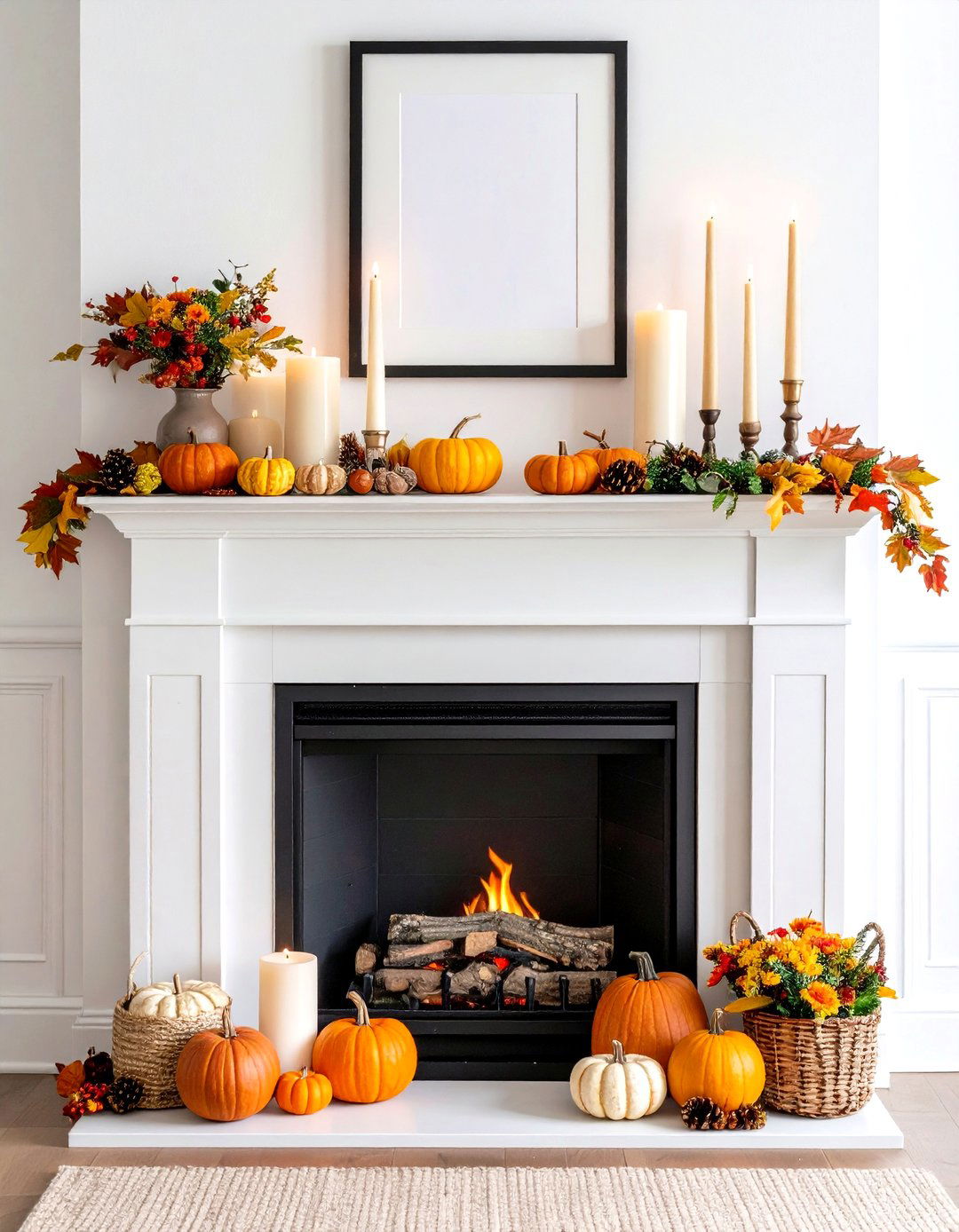
To refresh an existing fireplace without construction, start by rethinking the mantel as an ever-changing micro-gallery. Designers recommend mixing tall candlesticks with lower pottery for visual rhythm, then leaving negative space so each piece breathes. Layer a framed print slightly in front of a mirror to create depth, and vary textures—think raw wood, glazed ceramic, and a small brass sculpture—for subtle sparkle. Seasonal swaps keep the display feeling current: dried grasses in autumn, a bowl of citrus in winter, fresh greenery come spring. Painting the mantel in a contrasting matte tone can unify disparate pieces and spotlight the fire below without competing for attention.
14. Faux Fireplace Vignette
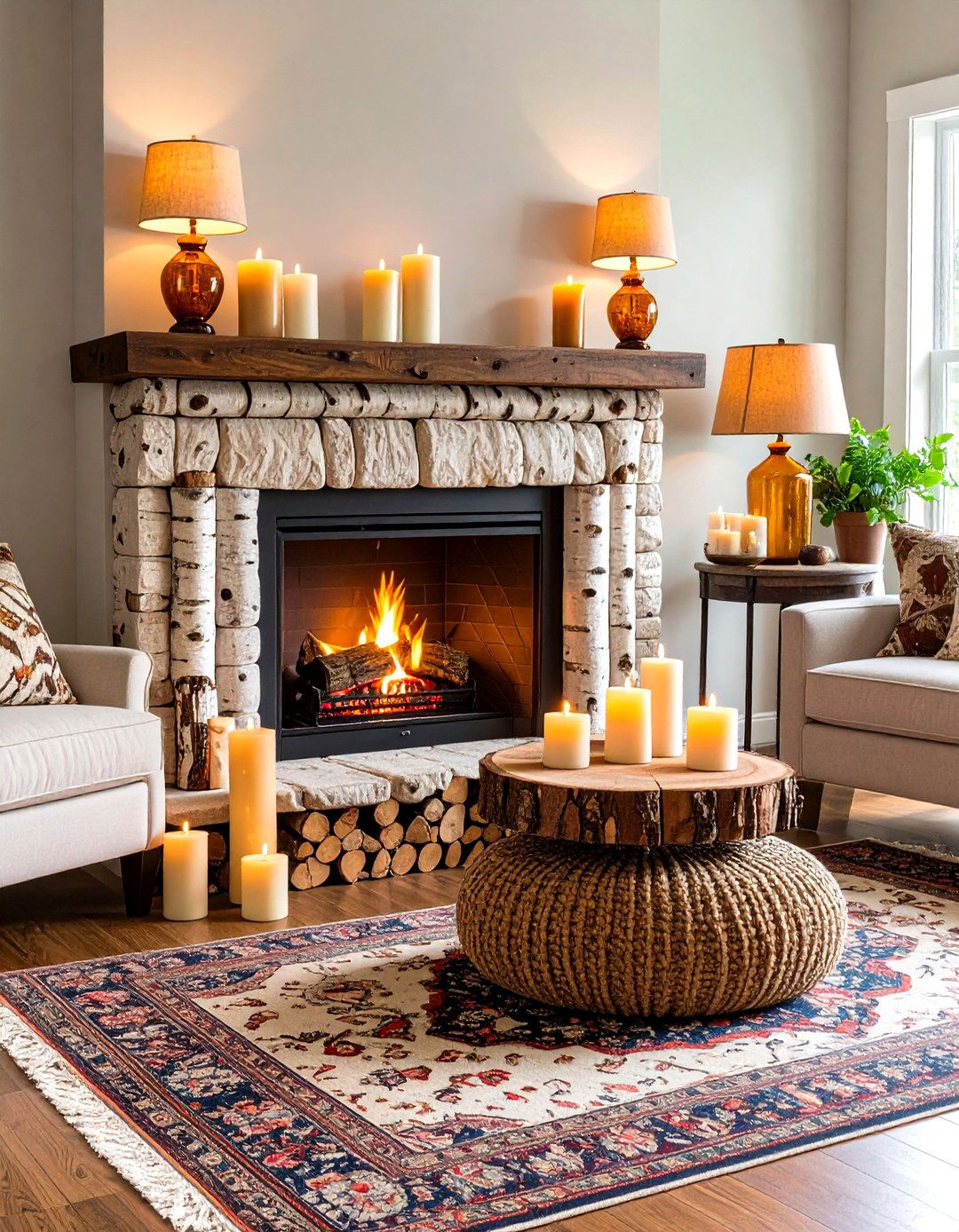
Even if venting a chimney is impossible, you can fake a fireplace and still capture the cozy vibe. Begin by designating a focal point—perhaps an empty alcove or a simple surround—then stack birch logs or group pillar candles inside to suggest stored fuel. Layer a vintage rug in front, add a hearth-sized basket of kindling, and drape fairy lights behind the logs for a subtle glow. Designers caution against flame-effect screens that often look artificial; instead rely on mirrors to amplify candlelight and warm table lamps to bathe walls in amber. The illusion tricks the eye and delivers comfort without real combustion.
15. High-Output Wood Stove
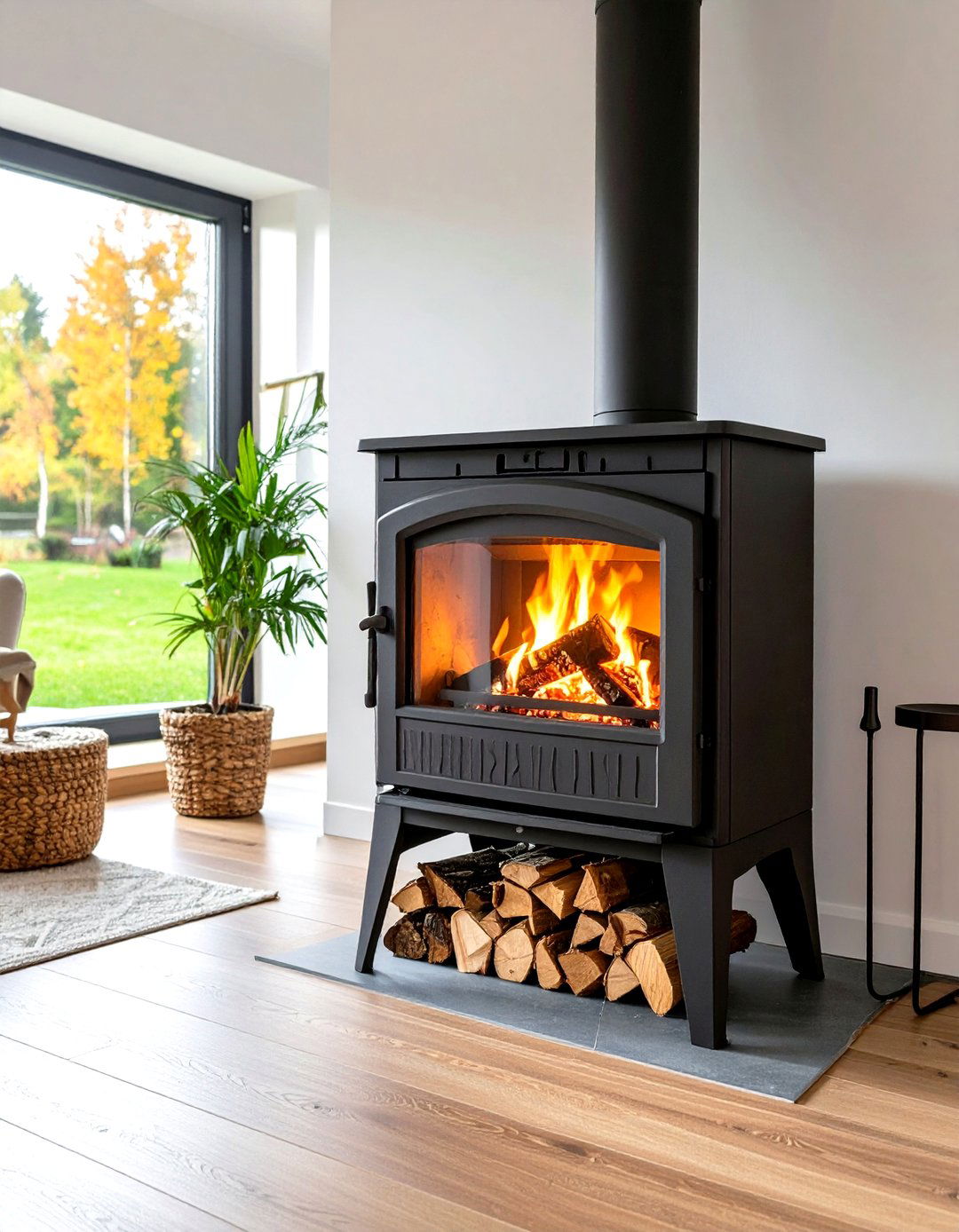
Swapping a tired open hearth for a high-output wood-stove fireplace dramatically increases heat while lowering fuel use. EPA-certified cast-iron models now deliver up to 80,000 BTUs—enough to warm 230 m²—yet feature air-wash glass that stays clear so you still enjoy the view. Top-loading designs accept 45 cm logs and include ash drawers that make morning clean-up painless. Optional cooktops keep soup simmering during power outages, and many stoves continue to radiate warmth for hours after the last log thanks to thick firebrick liners. If local regulations permit, a properly installed stove provides rugged reliability and the nostalgic aroma of wood smoke with twenty-first-century efficiency.
16. Water-Vapor Fireplace Magic

Water-vapor fireplaces create a captivating illusion by projecting light onto atomised mist, producing three-dimensional flames you can touch without burning. Because there is no heat, you can recess the unit in drywall, cabinetry, or even furniture where a real fire would be unsafe. Many 2025 models allow smartphone control of flame height and RGB colour, letting you dial in cool blue for a summer dinner or traditional amber for winter. Some include crackling-wood soundtracks and child-lock features for added realism and safety. With only distilled water as fuel, these fireplaces release zero emissions, making them ideal for apartments or hotel lobbies seeking drama without ventilation.
17. Smart App-Controlled Fireplace
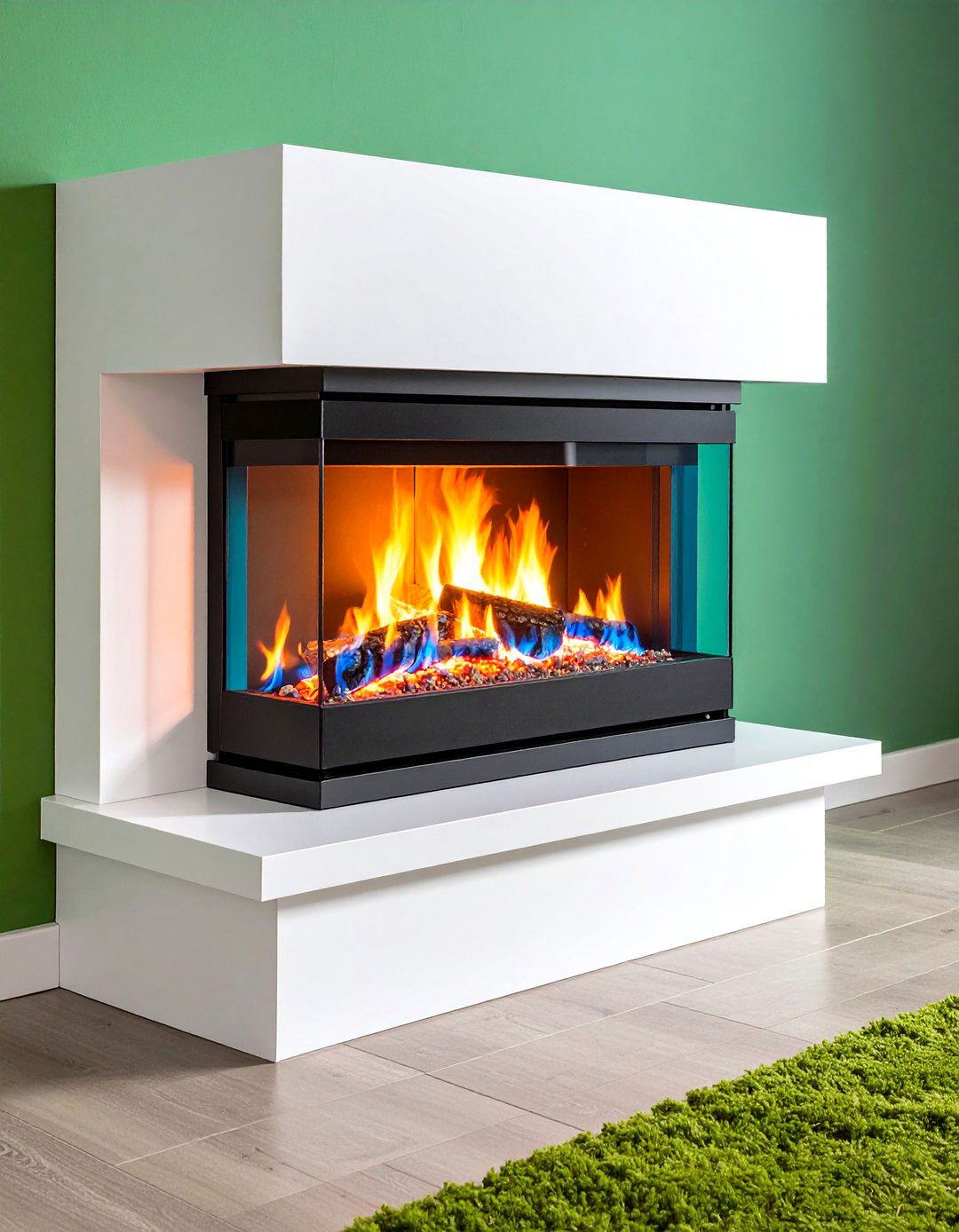
Smart fireplaces integrate Wi-Fi modules that let you ignite, dim, or schedule the flames from anywhere via an app, merging firelight with the rest of a connected home. Temperature sensors feed data to modulating gas valves so heat output matches your target room setting, reducing fuel consumption. Voice-assistant support enables hands-free commands while cooking or entertaining. Safety interlocks disable ignition if carbon-monoxide detectors trigger, and diagnostic alerts appear on your phone when service is due. Look for models with cloud-based firmware updates to ensure long-term compatibility. The convenience rivals smart lighting: one tap sets both ambience and comfort before guests arrive.
18. Eco-Friendly Pellet Fireplace
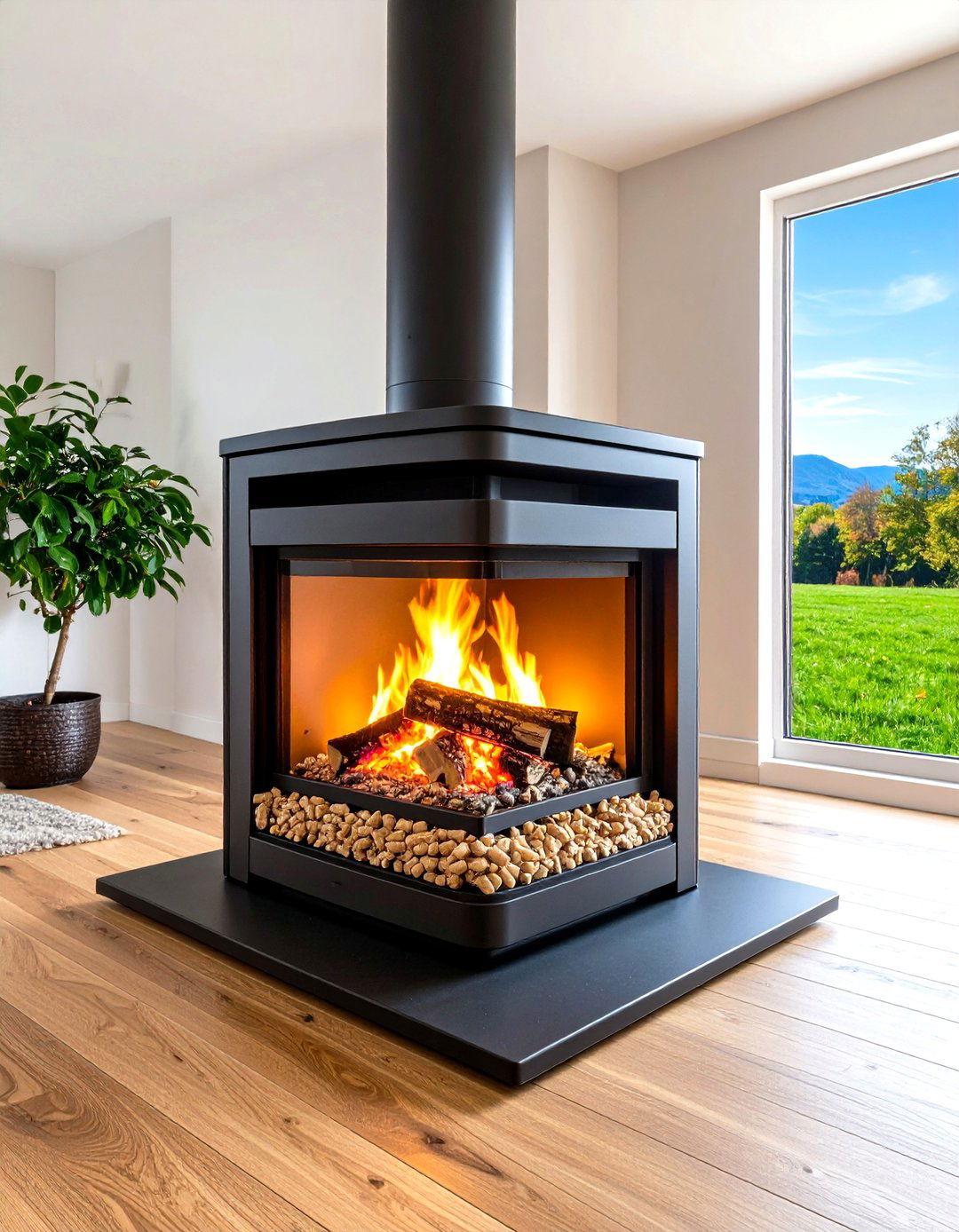
Pellet fireplace inserts and freestanding stoves burn compressed sawdust pellets, generating a steady flame with emissions so low they often qualify for renewable-energy incentives. Automatic hoppers feed fuel slowly, and electronic ignition maintains embers without matches. Because pellets store in clean 18-kg bags, space requirements are modest and moisture stays consistent for predictable heat. Many 2025 models heat spaces up to 230 m² while consuming less than 1 kg of fuel per hour on low, translating to economical operation. If you value sustainability but still want a live flame, pellets offer a practical middle ground between wood and gas.
19. Tile-Surround Makeover
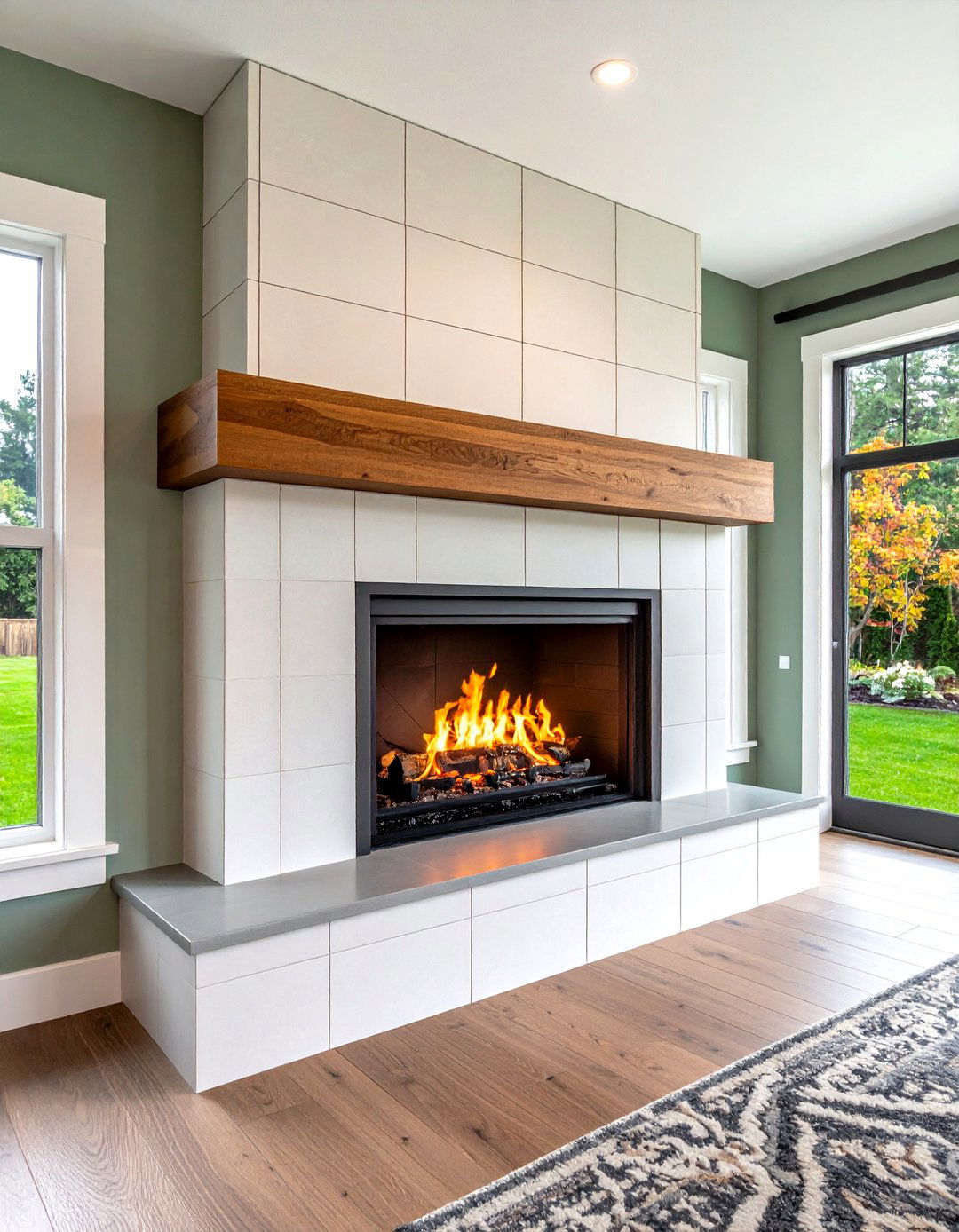
Refreshing a tired brick hearth with large-format tile can transform a fireplace in a single weekend. Porcelain slabs that mimic terrazzo or weathered concrete require fewer grout lines, contributing to a clean, contemporary look. Adhesive mats simplify installation—just press tiles into place and finish edges with slim aluminium trim. Continuing the tile onto the floor in front of the firebox forms a code-compliant hearth extension and visually lengthens the wall. Pair the updated surround with a simple maple mantel shelf for a warm-modern blend. The makeover costs a fraction of full demolition yet feels as transformative as new construction.
20. LED Ribbon-Flame Highlight
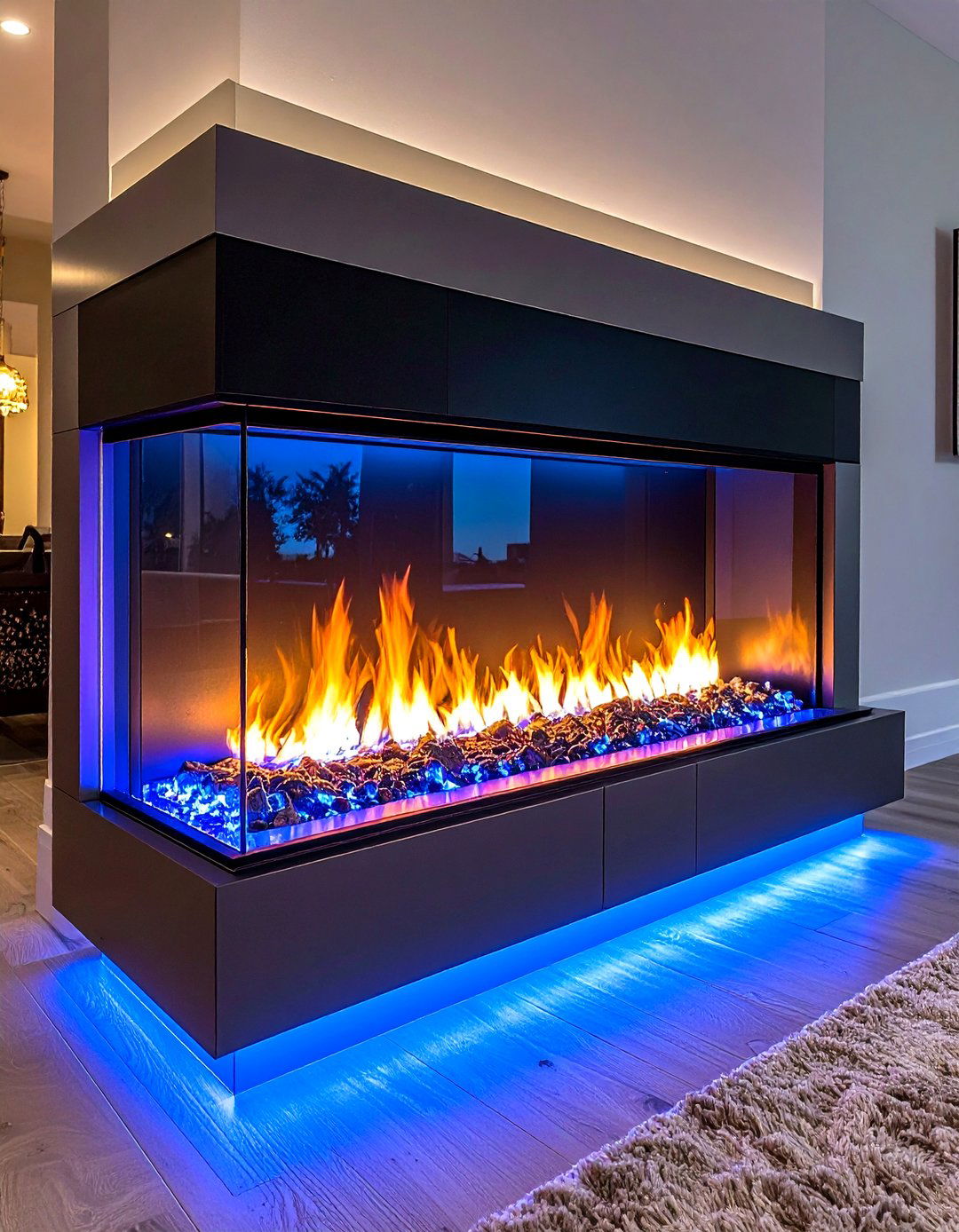
Linear ribbon-flame fireplaces now pair colour-changing LEDs with gas or water-vapor burners, letting you transform the mood from classic amber to neon violet at the tap of a remote. Multi-stage burners stagger fuel ports so flames rise in waves, and guided fan channels stretch the display up to 1.8 m without cold corners. Transparent safety screens virtually disappear, allowing uninterrupted views even when seated low on a sofa. Programmable scenes can fade colours slowly like a sunrise or pulse in rhythm with music for parties. When paired with matte-black surrounds, the vivid flame effect becomes the room’s cinematic centerpiece and a guaranteed conversation starter.
Conclusion:
By approaching your fireplace as more than a heat source—thinking of it as sculpture, technology, and social magnet—you unlock possibilities that fit every budget and architectural style. From mist-based flames safe enough to touch to monumental stone towers that anchor a vaulted ceiling, today’s options prove the hearth is still the emotional centre of a home. Choose the idea that aligns with your lifestyle, pair it with smart controls or simple logs, and you’ll create a setting that welcomes conversation, calms winter storms, and celebrates the timeless dance of fire.


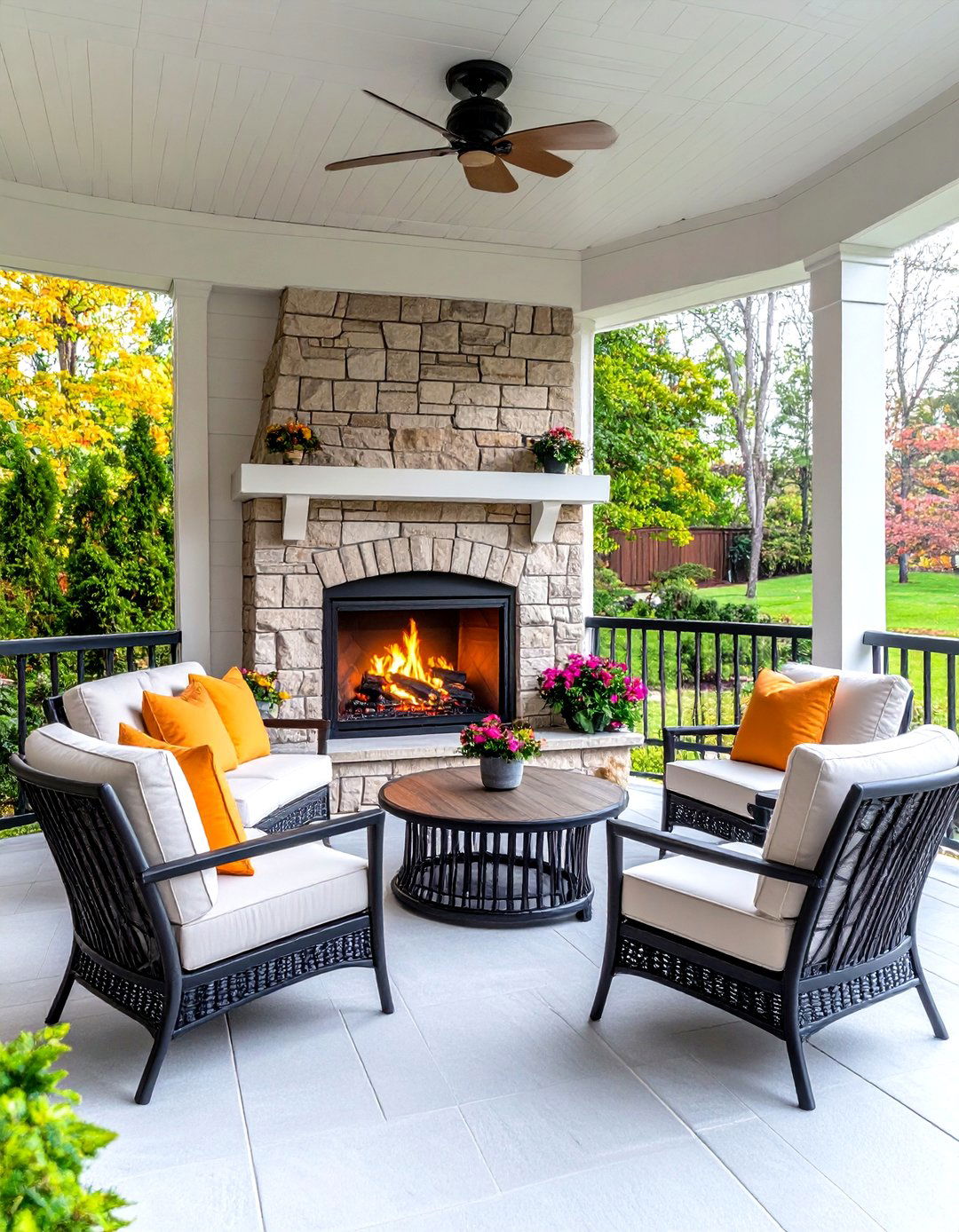
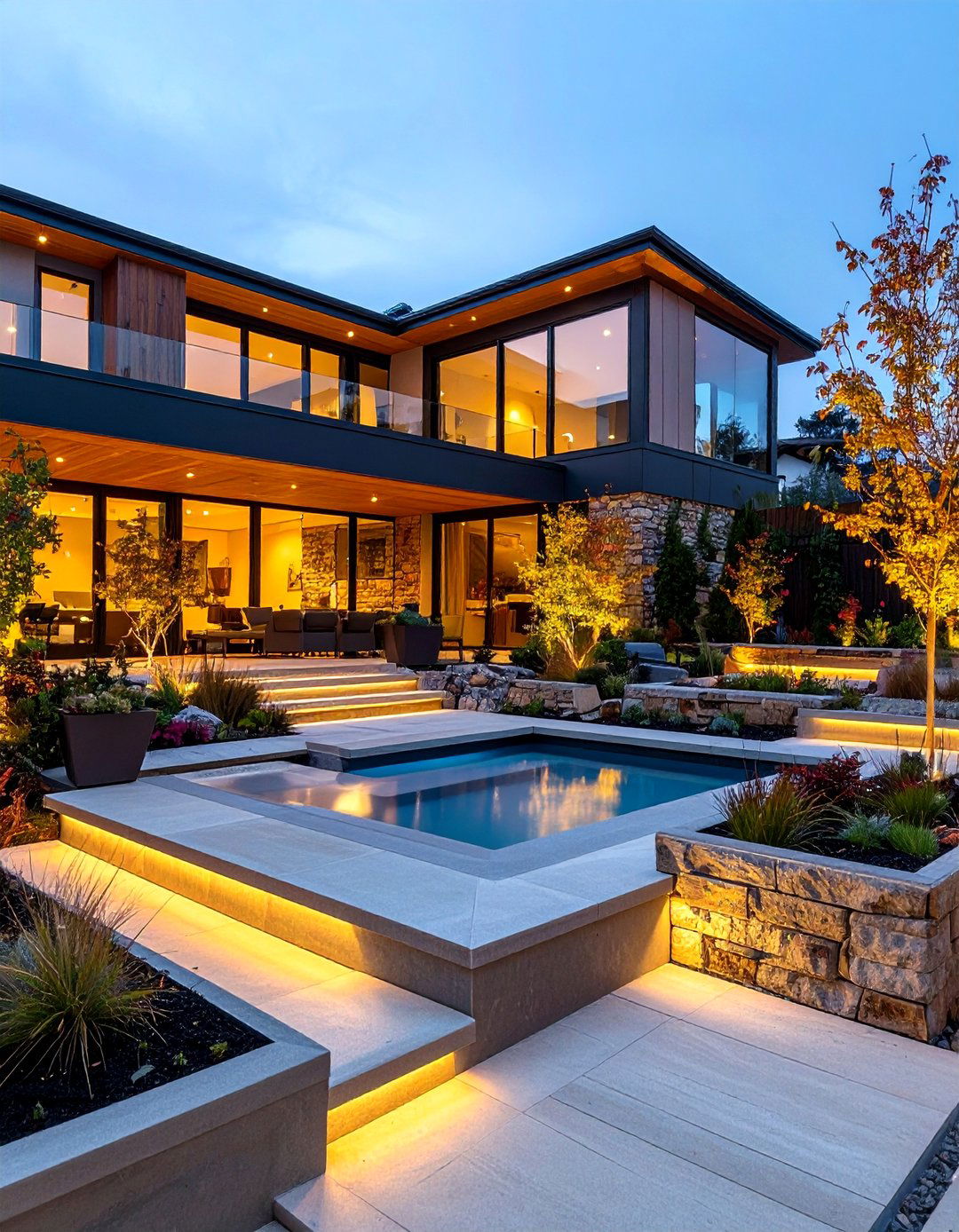
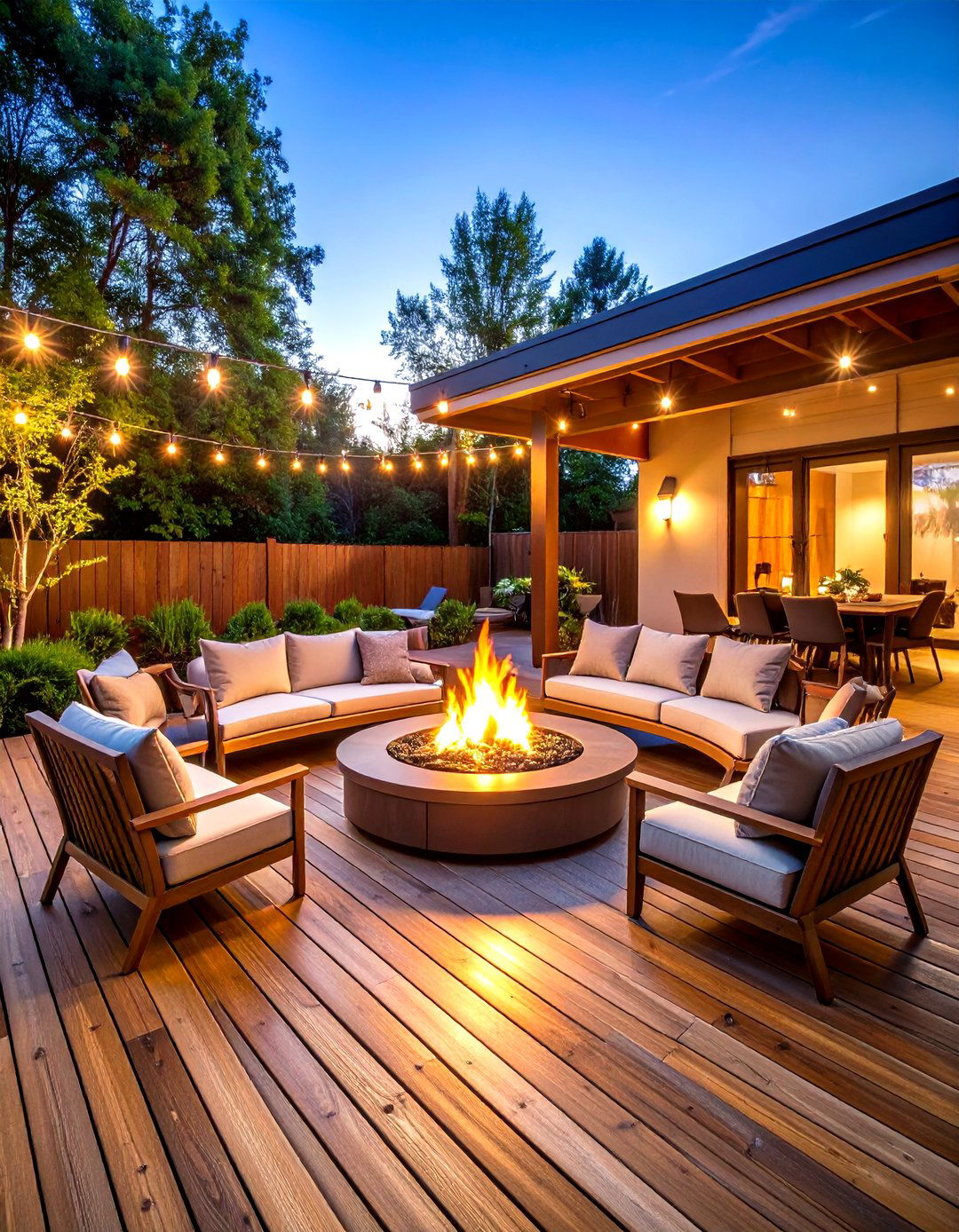

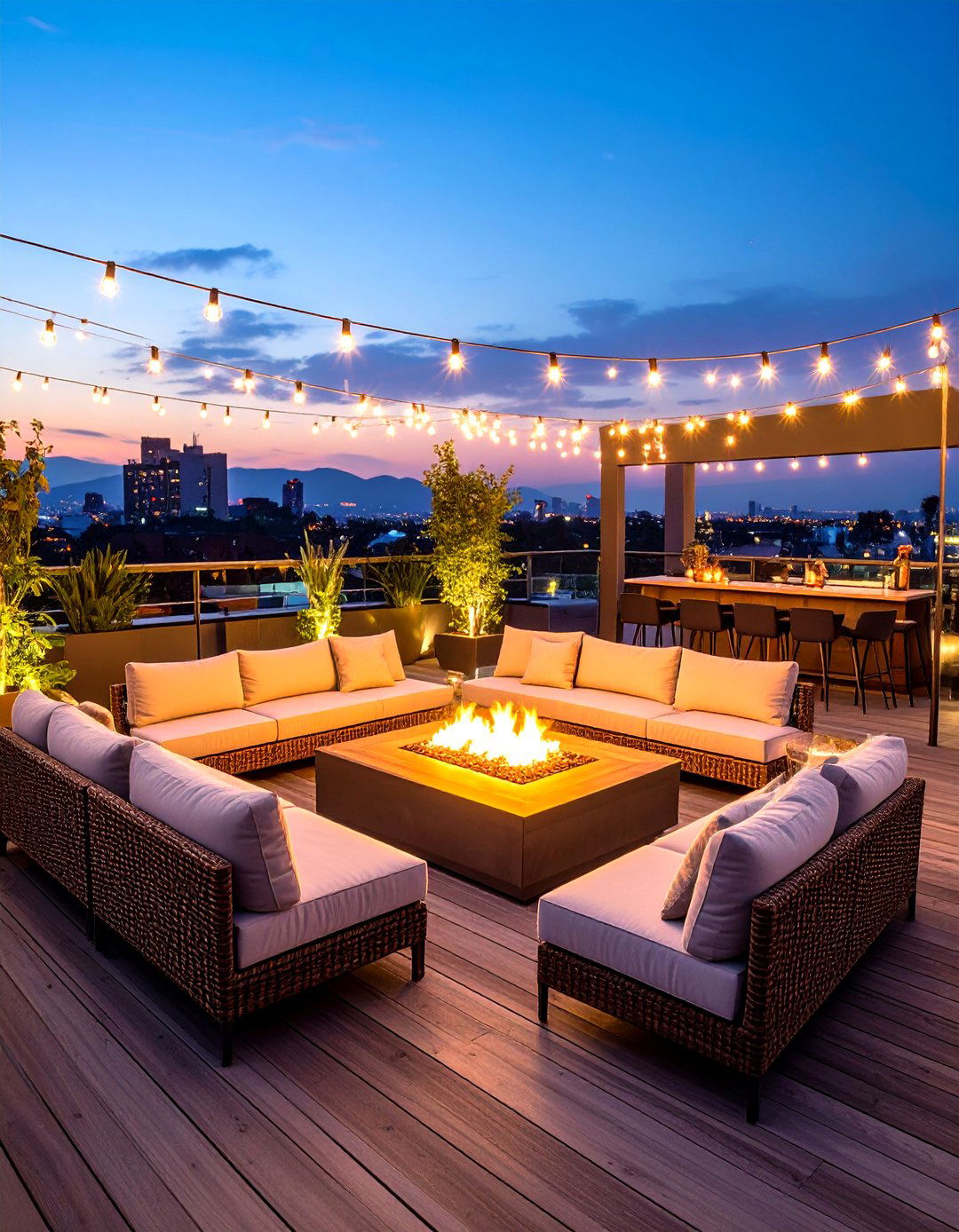
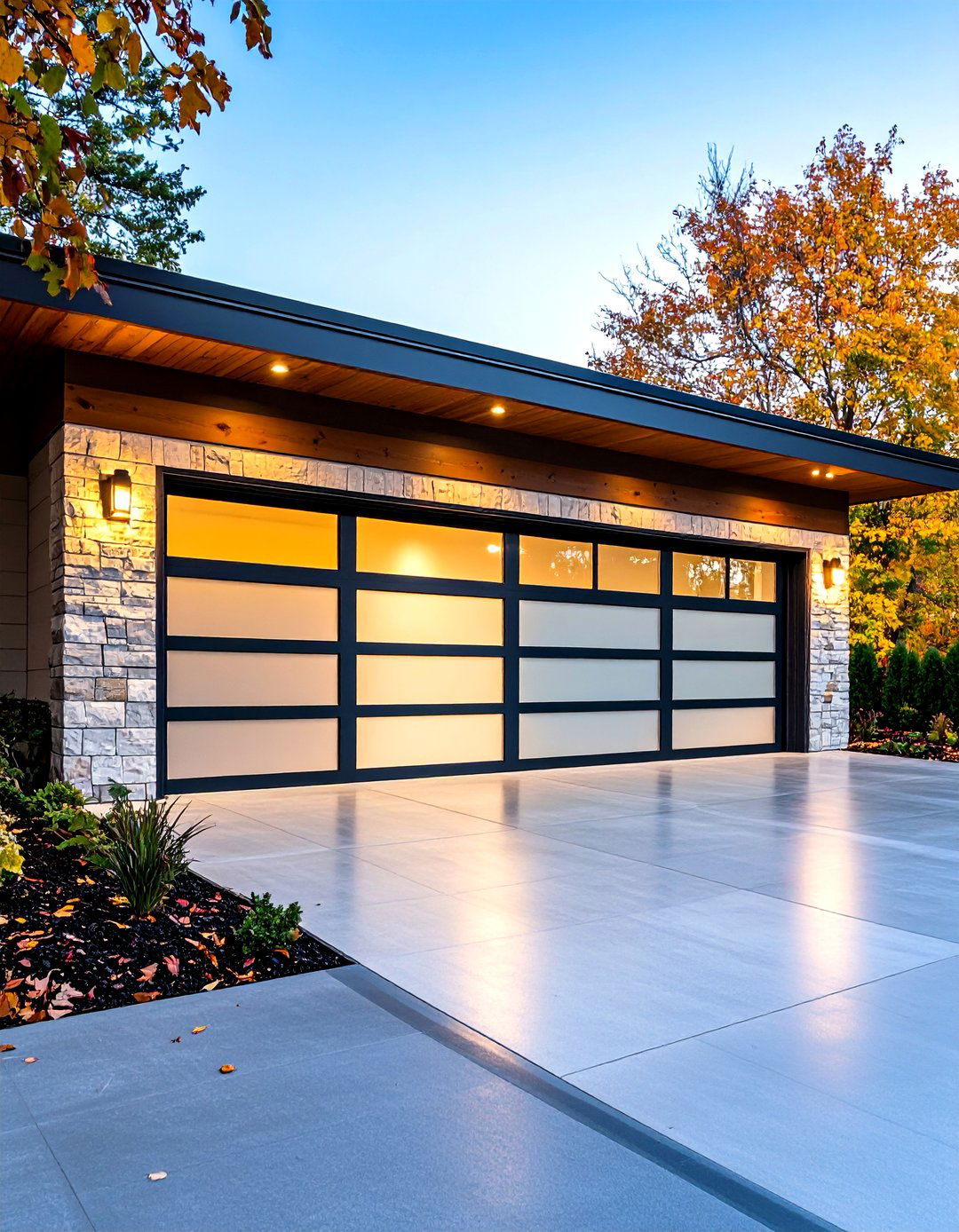
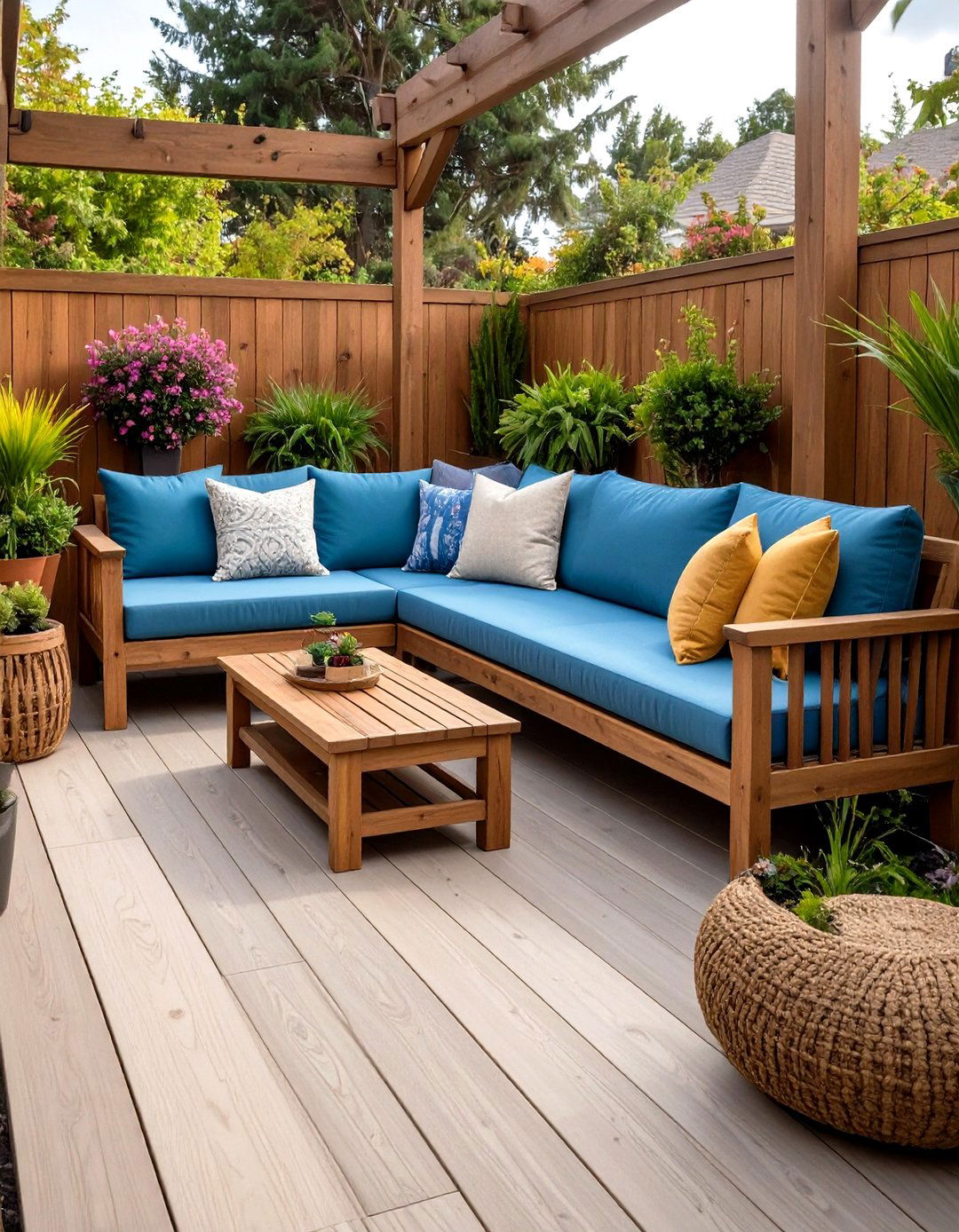

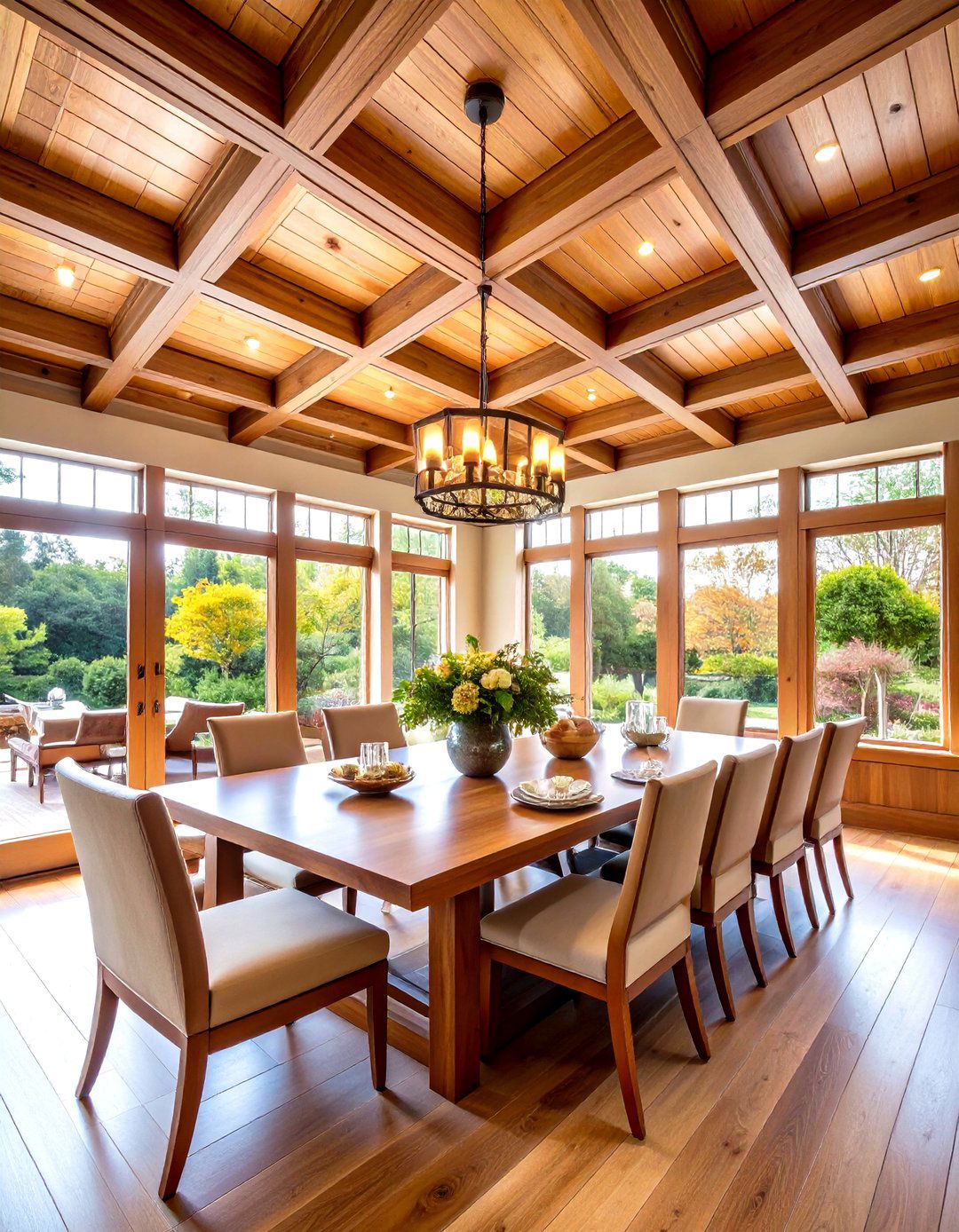
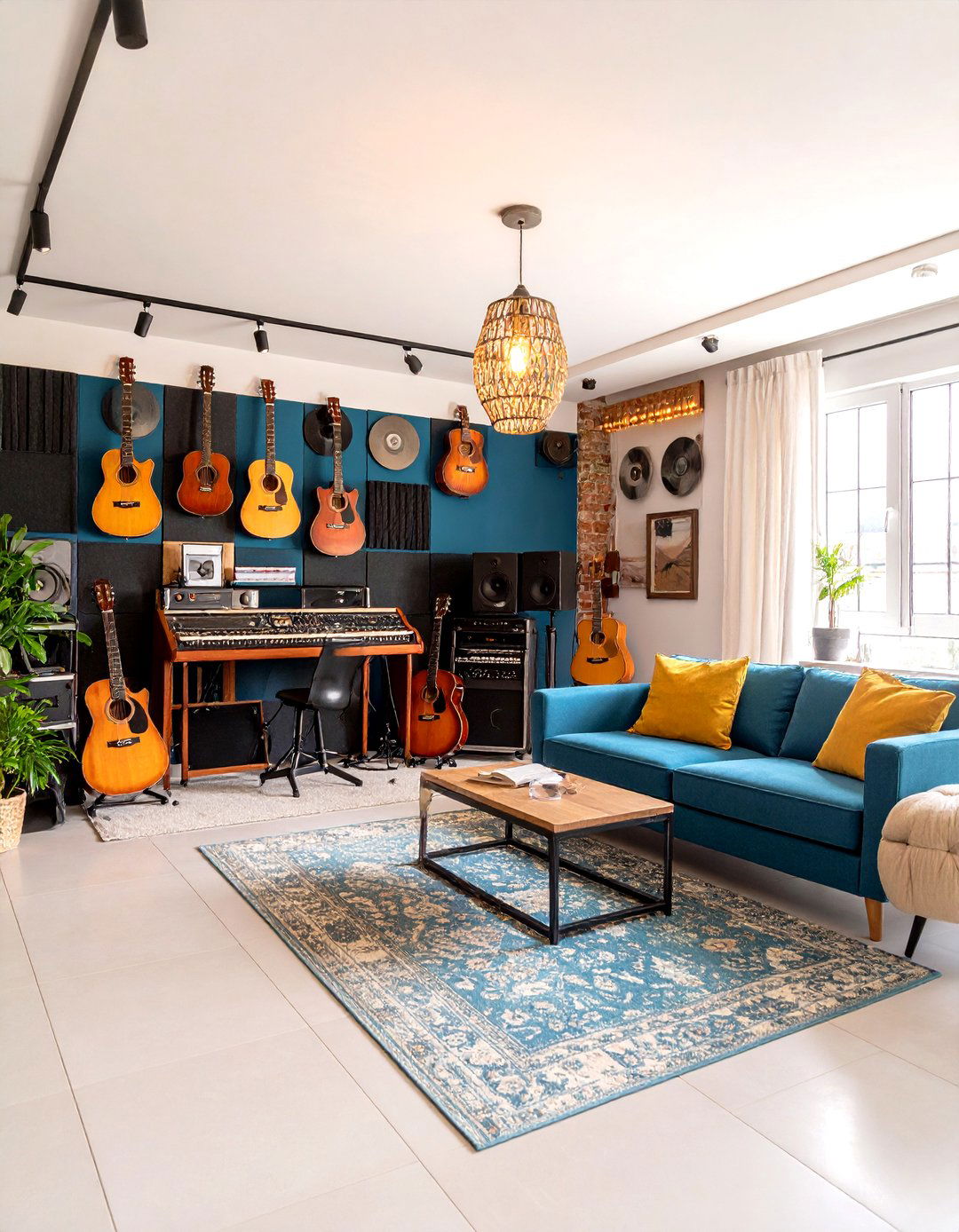
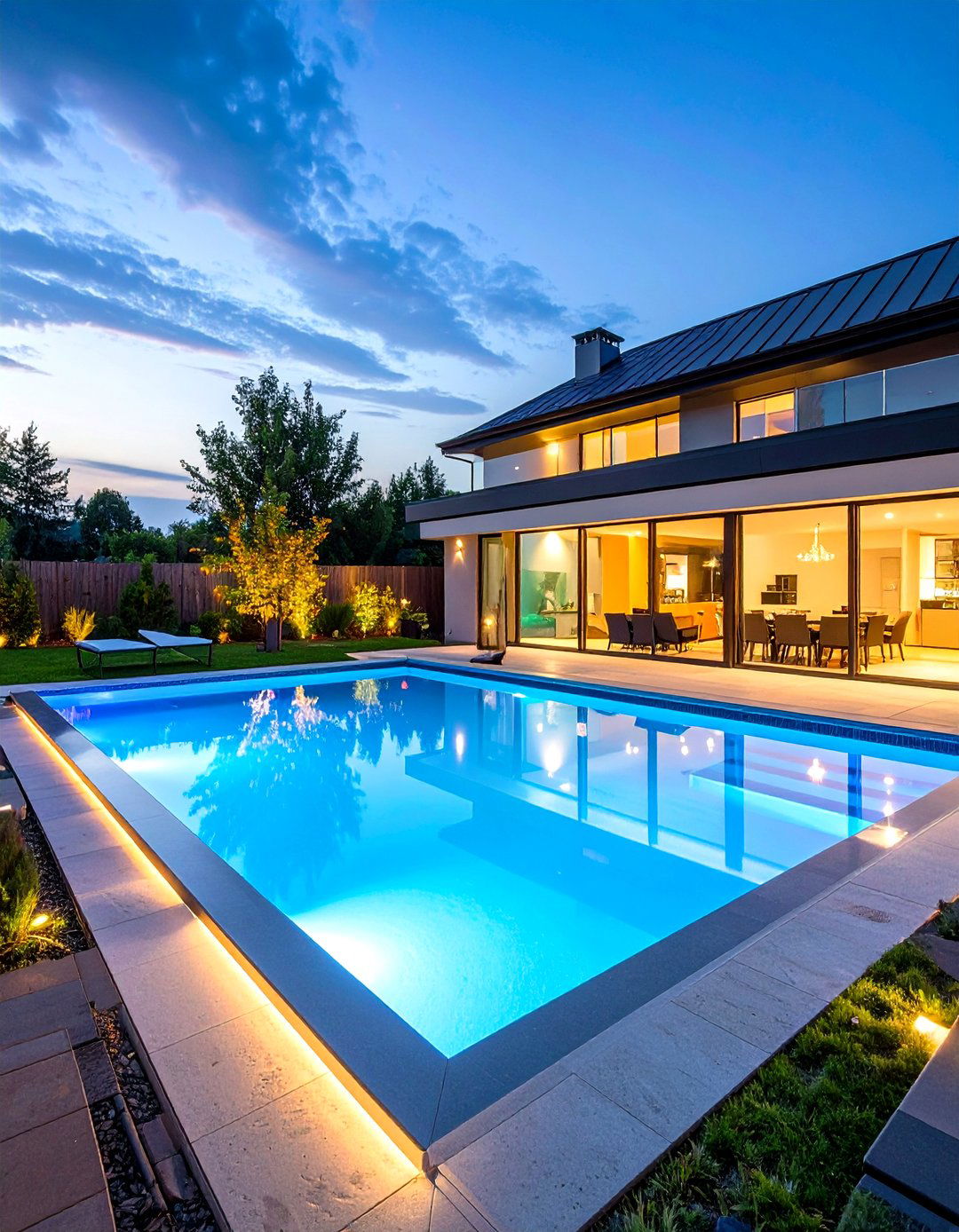
Leave a Reply